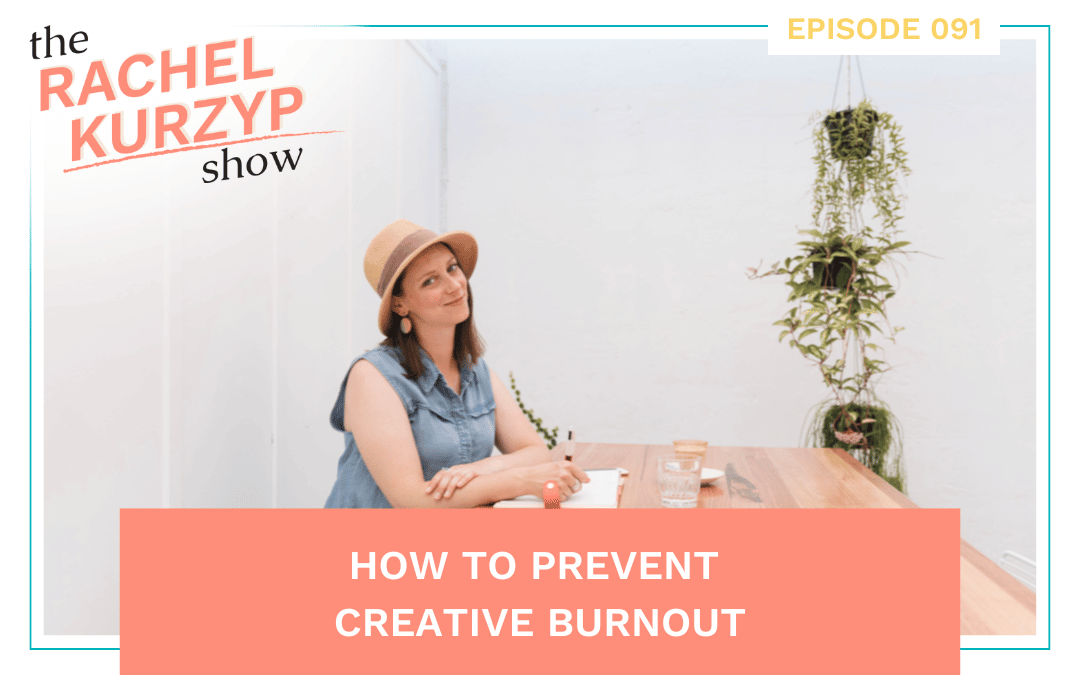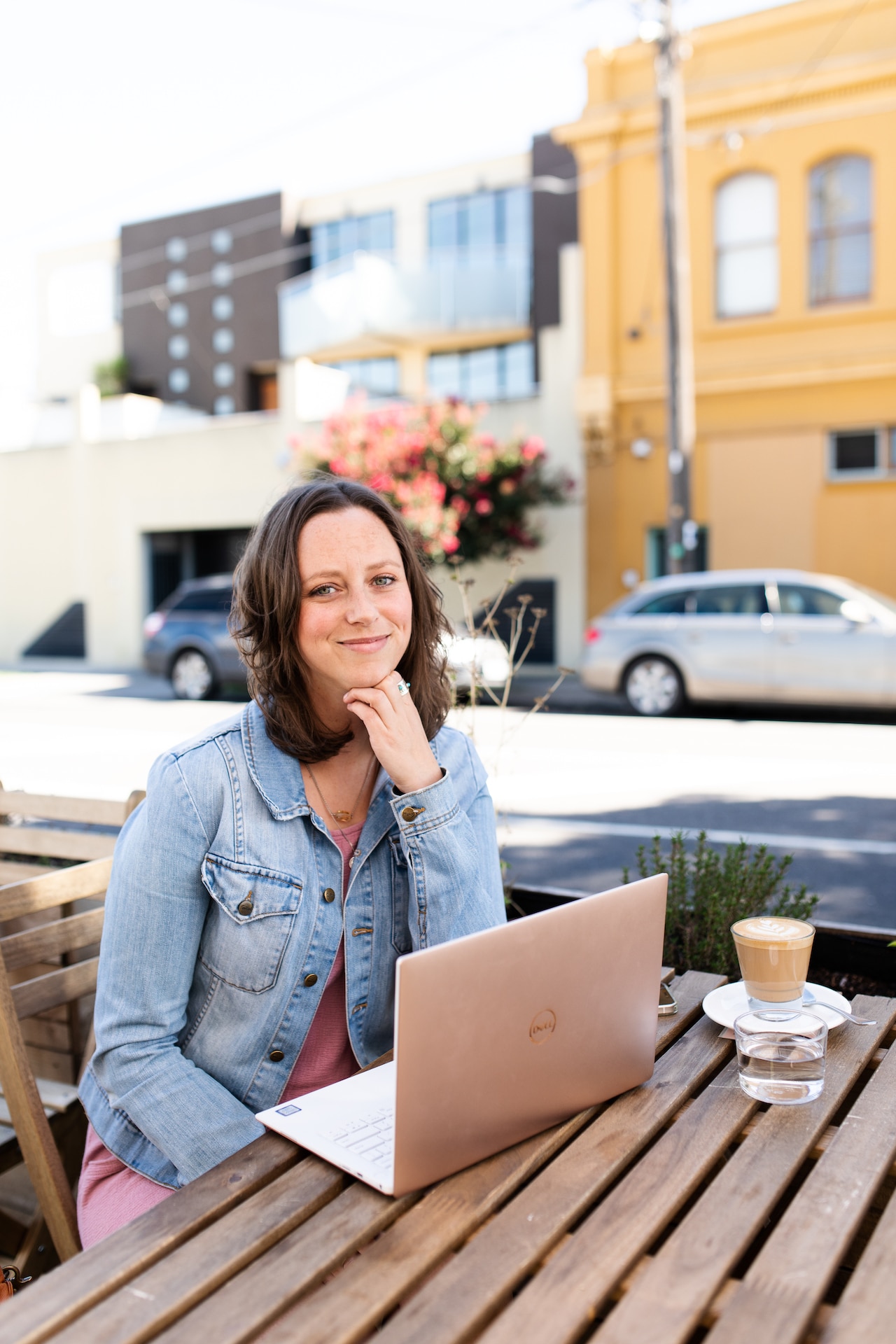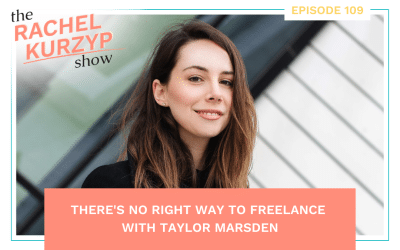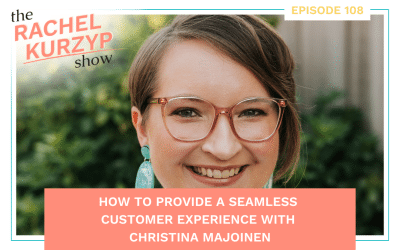Welcome to The Rachel Kurzyp Show.
Today I want to speak about burnout and how I’ve been recovering from creative burnout for the past 5-6 months.
Before we dive into this episode, I want to make it clear that I’m not a medical professional, and what I’m going to share today isn’t medical advice. If you think you might be experiencing burnout, please speak with a doctor and your support network.
Burnout is a huge issue right now, with recent studies in Australia, the UK and the US showing that up to 50% of the workforce is experiencing burnout. And I believe this percentage would be the same, if not higher, for founders and creatives in the online space.
I know so many business owners who have experience burnout at least once, if not more. Many of my 1:1 coaching clients come to me on the verge of burnout, and they often feel like they’ve failed in some way.
This just isn’t true. Creative burnout isn’t a personal failing. It’s a sign that there is a mismatch between your responsibilities and the resources you have available to do the work.
Burnout doesn’t happen overnight; it takes weeks and months of overwork and overwhelm before you start to feel the effects.
I experienced burnout for the whole of 2022 in varying degrees. I was mentally, emotionally and physically exhausted. A third of people who experience burnout have significant cognitive difficulties. And this was the most frustrating symptom for me because I never knew how I’d feel each day until I woke up.
On my worst days, I felt physically ill when I sat at my computer, and my brain fog was so bad I couldn’t write a sentence. On my better days, the ideas would come together, and I could interview someone for this podcast with relative ease.
A few things led to my burnout.
My physical health was at an all-time low after spending 20-21 in lockdown and being unable to exercise like I was used to. And as a result of lockdowns, I also was more susceptible to illness. I had the flu twice and COVID once in a period of about 8 weeks. It took me a year to get my physical health back to where it was, and I had many ups and downs along the way, like iron deficiency, that contributed to my fatigue.
My father has been undergoing preventive cancer treatment for years, and I’m his carer. He was coming to stay with us in Melbourne every three months to have surgery. As you can imagine, this is very emotionally taxing.
My role as a coach means that I’m supporting people through their highs and their lows. And there were many extremes for my clients, like many of us, over the past few years. I loved that I could support my clients through some of the hardest years ever to be in business, but I’d be lying if I didn’t say it was challenging.
And finally, I hadn’t had a work free-holiday in 7 years. Even when I wasn’t working, I was still thinking about work or being asked about my work. I couldn’t ever truly turn off. I had become a business owner first and a creative human second.
To sum up, at the end of the day, I didn’t have anything left in the tank and could not get the support I needed to keep doing everything I was doing.
That’s why in September, I let my team and coach go, put my 1:1 coaching program on hold and went on a month-long break from work. This month turned into months. And it wasn’t until mid-Jan this year that I returned part-time to my business.
I knew that if I didn’t take an extended break and continued working on empty, I would have no choice but to close my business for good at the end of 2022.
Now that’s not to say I don’t love my work or that I’m not incredible at my job because I am, and I do. But we must start speaking openly and honestly about the emotional, mental and physical costs of running a business, especially as a founder or creative.
I want a sustainable and profitable business. I don’t believe these are mutually exclusive, but I know it’s not as simple as working hard, then taking a paid holiday a year, and drinking cocktails by the pool once a year.
It’s about setting intentions and the little decisions you make every day. So here’s what I’m doing to recover from creative burnout. And more importantly, what I’m doing to prevent it.
I hope sharing my burnout experience and these 5 steps below will support you wherever you’re in your business journey.
Get support
Don’t try and do everything on your own. Let loved ones, peers, co-workers and your team know where you’re at and how they can support you. Get support in your life too. I have a personal trainer, GP, therapist, and cleaner for my house, and Pacey goes to daycare on Wednesdays.
Identify stressors
For me, this was creating content. That’s why I stopped posting on social media and releasing episodes on the podcast. Managing a team was also another huge stressor for me. I felt like I was always behind and couldn’t meet their deadlines, and I spent more time managing people than doing my role as CEO. More on this soon. That’s why it was an easy decision to let my team go.
Set boundaries
A lot of burnout for my clients comes from not maintaining their boundaries, especially around their systems and processes. Things like clients not providing resources by the due date or not following the set feedback process. It’s so important to set client expectations. In my case, I receive a lot of DMs and emails from clients and my community, which I love. Many of these ask for my advice or opinion on things. So I’ve had to reset my boundaries around how I support my community and the time I dedicate to this. If I take longer to get back to your messages, this is why.
Identify what you can ditch, delegate or delay
Work out your financial and marketing minimum, and don’t push yourself to go beyond that. Then remove anything on your to-do list that doesn’t make money or call in clients. And if you can, delegate tasks outside of your zone of genius to others. I’m hiring a brand designer and SEO consultant to help me this year, so I don’t burden myself with tasks.
Prevention
Research shows the biggest thing you can do to protect yourself from burnout is to turn off push notifications on your phone and limit checking your emails and social media accounts to once a day or even a few times a week. I did this and felt my nervous symptoms relax after a few days.
Was hearing me speak through my burnout experiences and the changes I’ve made helpful?
Let me know by sending me a DM on Instagram. My handle is rachel_kurzyp.
Thanks so much for tuning into today’s episode.
If you’ve found what I’ve shared valuable, please leave a review and hit the subscribe button so you don’t miss when a new episode drops every Wednesday.
Resources and links
Burnout study: Watch a 3-minute overview on the ABC
Book your call: Learn how we can work together in my 1:1 Coaching Program





